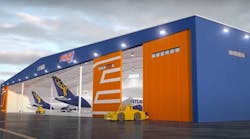Safety management systems or SMS are fast becoming the standard in many aviation organizations in the United States and across the globe. Even though the FAA has not issued a rule yet mandating SMS (a rule applicable to Part 121 airlines is possible this year), many U.S. aviation entities – including airlines and repair stations – have proceeded to implement SMS even in the absence of an FAA rule.
Many of these companies see the benefit of a structured, data-driven approach to risk management to improve the safety of their operations. And that is the promise of a well-run SMS program. But in addition to safety improvements, many operators I have spoken with who have implemented an SMS program have also found that the costs of implementation are more than off-set by the money that can be saved, particularly when potential problems are uncovered and either eliminated or mitigated before they can
become actual incidents or accidents. So over the next few years, more and more mechanics will find themselves working in organizations that have an SMS.
So what’s a mechanic’s role in an SMS?
So what’s a mechanic’s role in an SMS? A critical component of any SMS is the identification of hazards in a company’s operation. For any aviation entity performing maintenance, those hazards can range from dangers to the workers themselves to the dangers of aircraft damage to the risk of an aircraft accident affecting the lives of passengers and people on the ground. Clearly, mechanics by the very nature of their work are in a position to know about many hazards. While some of the hazards could be
observed by others – such as trip and fall hazards – others are exclusively within the realm of a mechanic’s experience and expertise. And these are the hazards that could have the greatest potential impact on aviation safety.
Observe the hazards
Mechanics, of course, are in a unique position to learn of hazards that affect the maintenance of aircraft. Many of those hazards will be observed in the course of performing maintenance. Some of those hazards could involve the aircraft or aircraft systems, components, or parts. For example, mechanics frequently observe problems in areas unrelated to the task at hand but their companies don’t always have a standardized system for reporting these problems to the engineering department for review and taking appropriate action. The benefit of an SMS program would be to standardize how these problems are recorded and handled, including disseminating information to everyone in the company who might have a need to know, such as the engineers.
Identify problems with paperwork
Other hazards that mechanics would have insight into are the problems with unclear or incorrect paperwork used to perform maintenance, such as job cards, maintenance manuals, or instructions for continued airworthiness. Getting incorrect paperwork corrected has proved challenging – and frustrating – for many mechanics. A well-run SMS program would ensure that any deficiencies noted would be properly dealt with and the procedures corrected.
Because of the unique knowledge that mechanics have of a maintenance operation, no SMS program involving aircraft maintenance can be successful without the input of mechanics. If and when you work at an outfit that has an SMS program, it is important that you fully familiarize yourself with the program and participate in it. In my experience, SMS is definitely worth the effort.
John Goglia has 40+ years experience in the aviation industry. He was the first NTSB member to hold an FAA aircraft mechanic’s certificate. He can be reached at [email protected].


